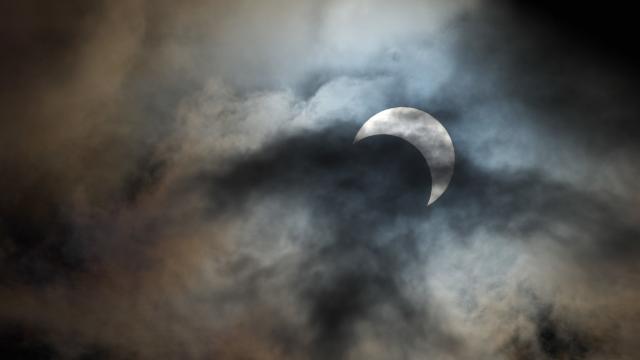The Moon took a big chomp out of the Sun over the other side of the world last weekend, and photographers across the Americas were ready to capture the celestial feast..
On Saturday, October 14, the skies dimmed across much of the western hemisphere, with regions along the path of annularity treated to the “ring of fire” effect. Clouds were a factor across much of North America, but the Sun’s brilliance still managed to peek through the veil in some cases.
Take a look at some epic pictures.
The view from Boise
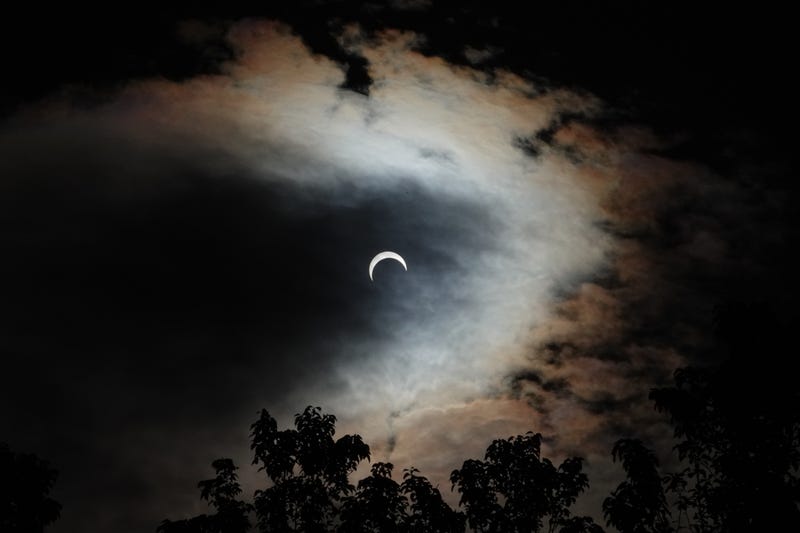
The photo above shows the partial eclipse from Boise, Idaho. Millions across the Americas were treated to a dazzling display as the Moon slowly slid into position, obscuring vast portions of the Sun’s blazing surface.
Ring of fire
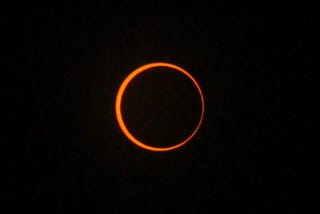
An annular eclipse results in the “ring of fire” effect due to the Moon’s elliptical orbit around Earth. The view above was taken from Los Alamos, New Mexico. At certain times, the Moon is farther from Earth and thus appears smaller in the sky than the Sun. During an annular eclipse, the Moon does not completely cover the Sun, leaving a bright outer ring of sunlight visible. This bright circle is what’s referred to as the “ring of fire.”
A beautiful progression
Ring of fire through the clouds
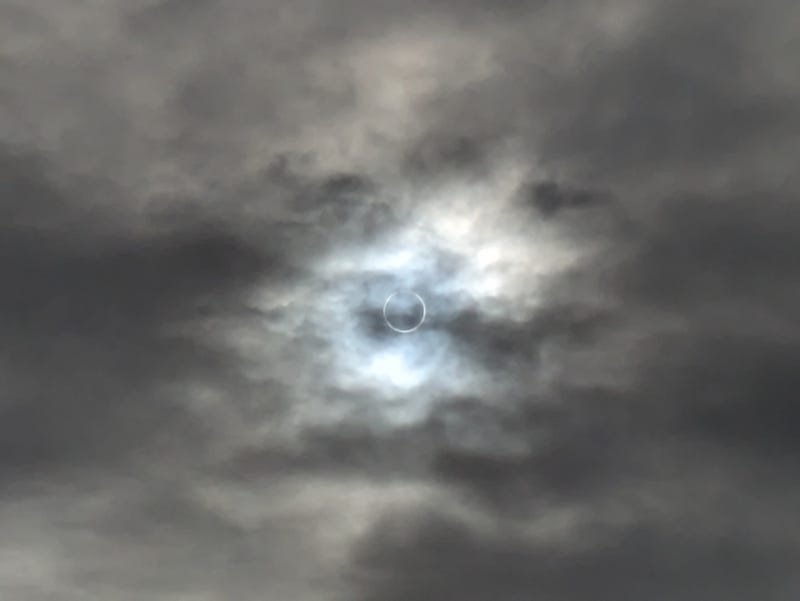
Above is a view of the eclipse from Winnemucca, Nevada. Clouds were a menace across much of North America on Saturday, but that didn’t always pose a problem for photographers eager to catch a glimpse.
The view from above
National Oceanic and Atmospheric Administration (NOAA) satellites provided a rather unique view of the eclipse, seen as a giant blob moving across the face of the planet.
The view from cloudy Ontario
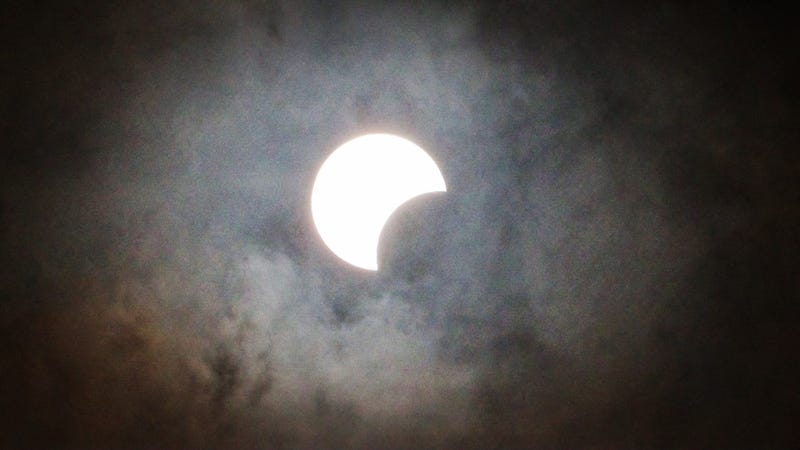
Behold my first attempt at capturing an eclipse. The partially obscured Sun was visible despite the incessant clouds, and I was fortunate that it happened around 1:10 p.m. ET, the time of maximum obscuration in southern Ontario. I captured this view using a Dwarf II telescope equipped with a solar filter.
Sunspots sighted
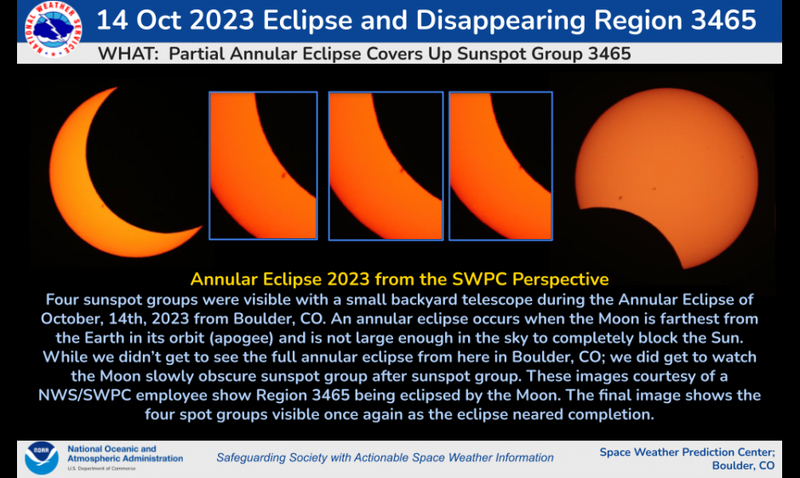
Photographers and astronomers managed to spot some sunspots during the eclipse.
Partial obscuration

Viewers along the path of annularity were able to capture the “ring of fire” effect, but outside of this zone, people were still able to get partial views of the eclipse.
Vivid detail
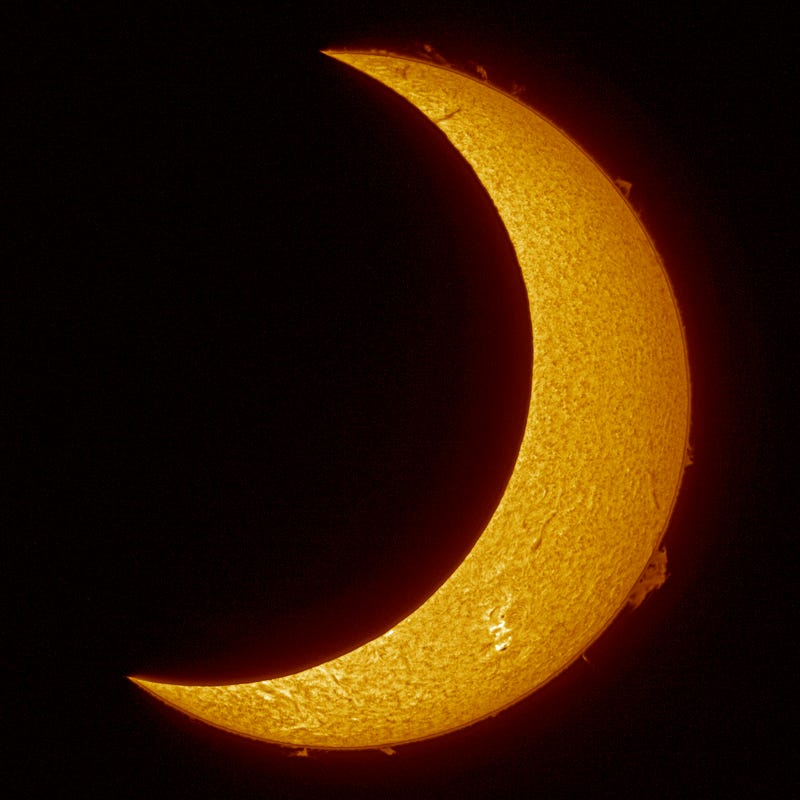
Photographer Alan Moore captured this extraordinary view of the partial eclipse with a Canon Canon 7D Mk 2 attached to a Lunt LS60THa. The image was then processed in Photoshop from a mono image, with false colour added during the editing process.
The view from Brazil
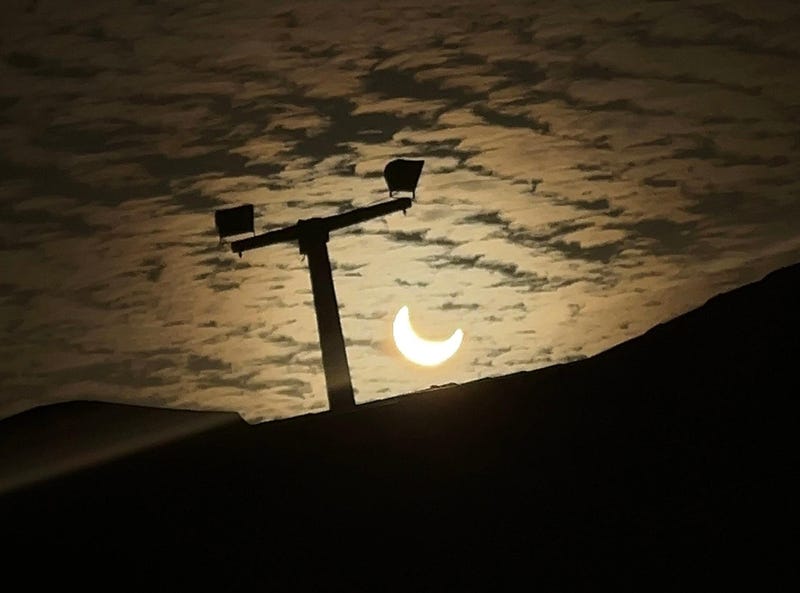
Clouds contributed to this creative shot of the eclipse, as seen from Pedra Mole in Brazil. The annular eclipse was also seen in Mexico, Guatemala, Belize, Honduras, Nicaragua, Costa Rica, Panama, and Colombia.
Tiny bite
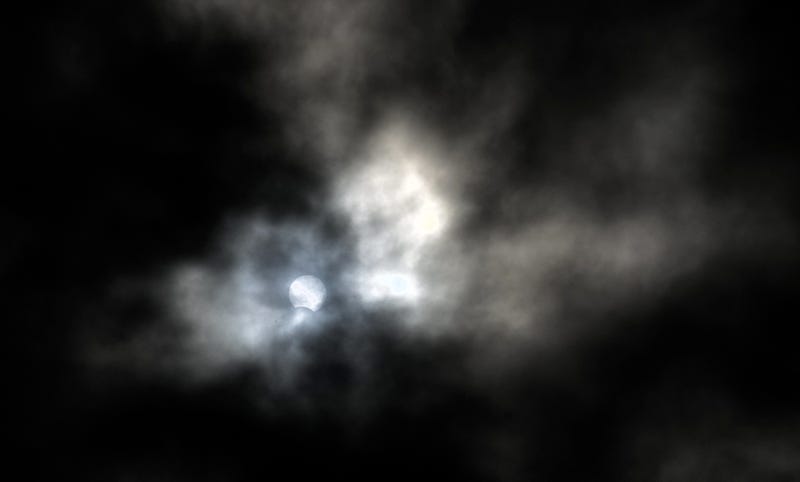
In the United States, the solar eclipse first appeared in Oregon at 12:13 p.m. ET and concluded in Texas at 1:03 p.m. ET. During those 50 minutes, the path of annularity appeared across eight U.S. states, namely Oregon, the northeast corner of California, Nevada, Utah, lower Colorado, upper Arizona, New Mexico, and Texas.
Strange shadows
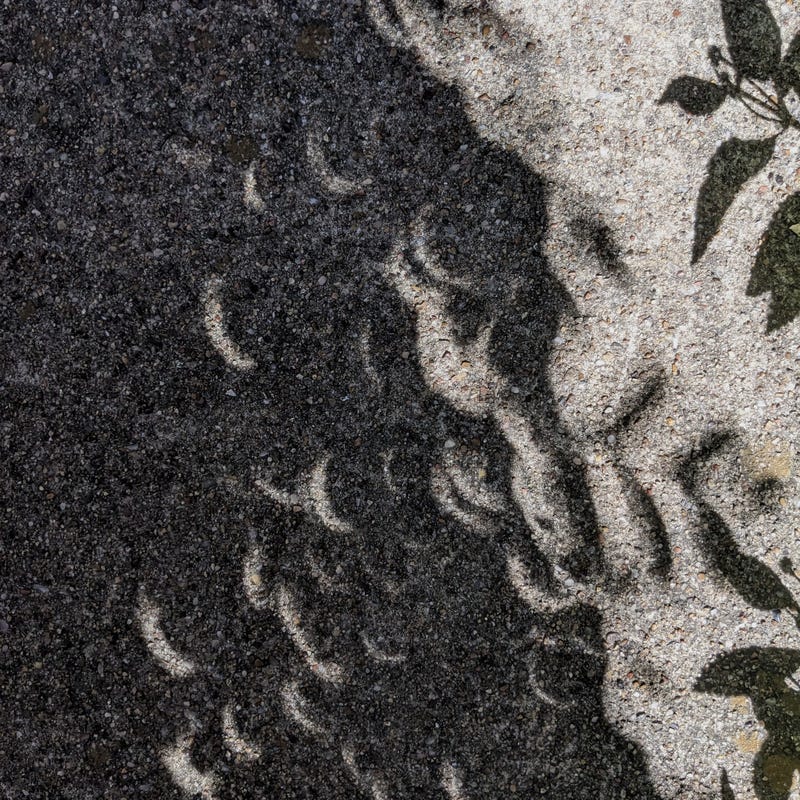
Photographer Steve Rainwater captured these crescent-shaped shadows on the sidewalk.
Eerie crescent
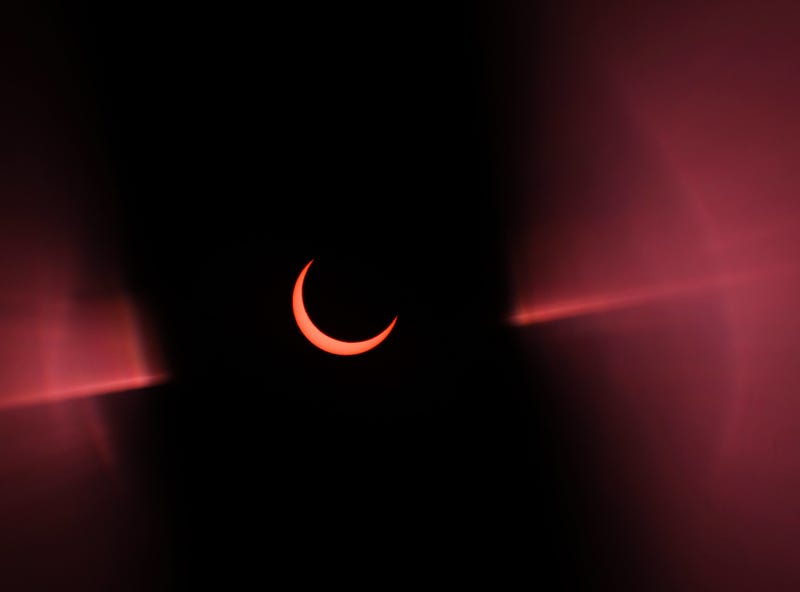
Many ancient civilizations were scared or deeply awed by eclipses, often interpreting them as omens or the wrath of the gods. I will admit that the eclipse felt a bit spooky.
It’s getting a bit dark in here
Freelance photographer Alex Rubio captured a timelapse in central Texas that really shows the dimming effect.
Homemade filter
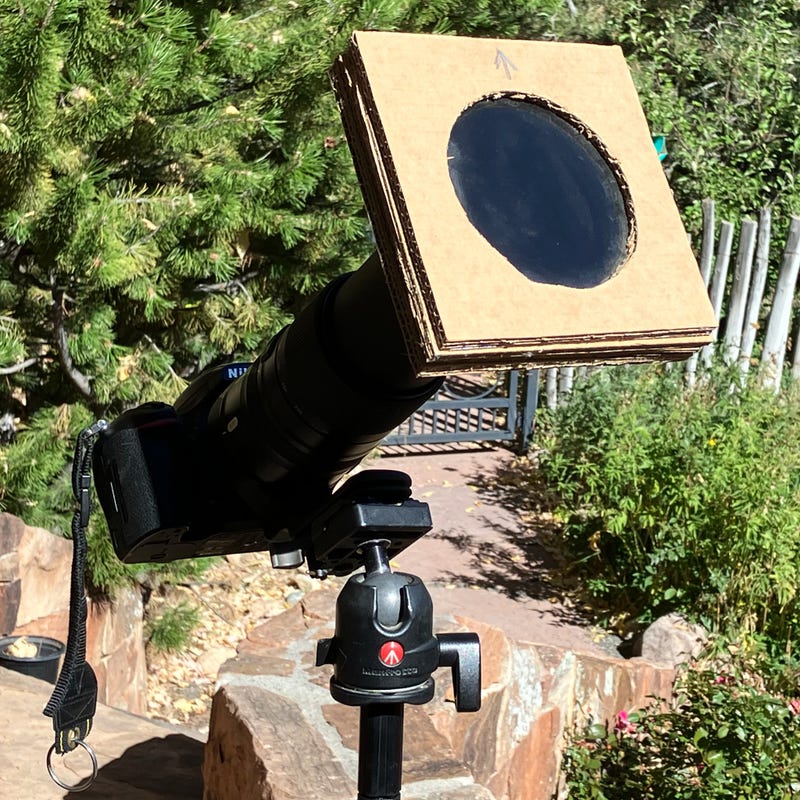
There are many ways to capture an eclipse, such as mounting homemade filters onto regular cameras. Or, as I did, by mounting a solar filter onto a telescope. “To truly savour this astronomical wonder, safety comes first,” Franck Marchis, co-founder and chief scientific officer of Unistellar, said in an emailed statement. “Viewers should always utilize certified solar eclipse glasses or solar filters for devices, to ensure not only a memorable experience with loved ones but also safety for future viewings.”
Paper filter
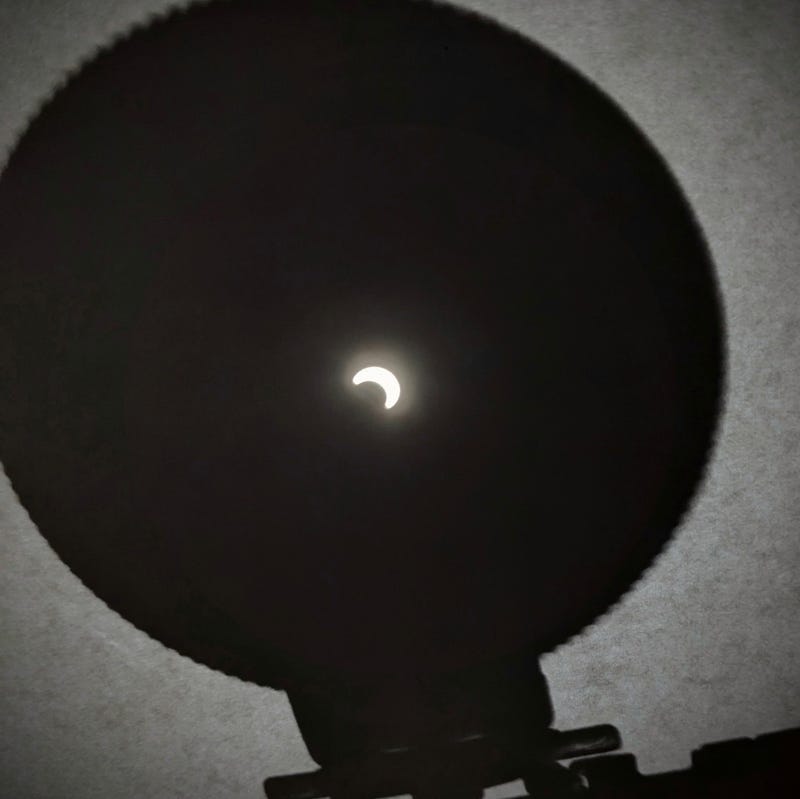
Photographer Steve Rainwater made this view of the eclipse by photographing a piece of paper held behind an old Canon 500mm reflex lens.
Darkened skies

“It wasn’t the clouds that darkened the sky,” writes photographer John Loo, who captured this stunning view from Sunnyvale, California.
